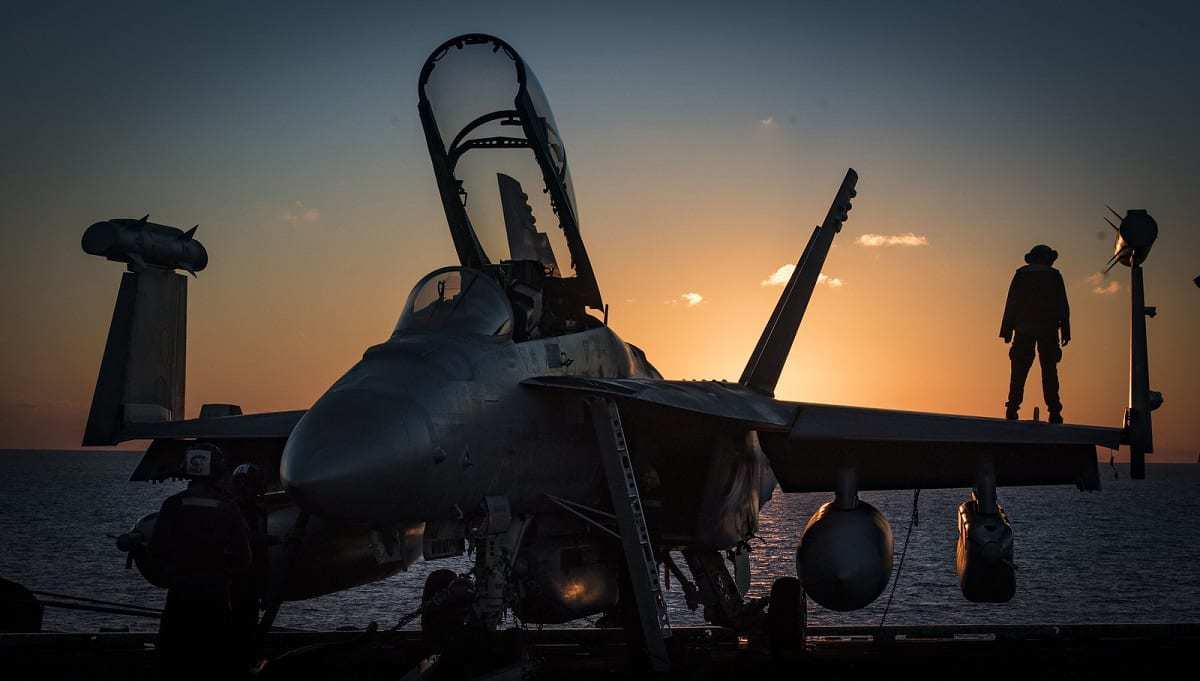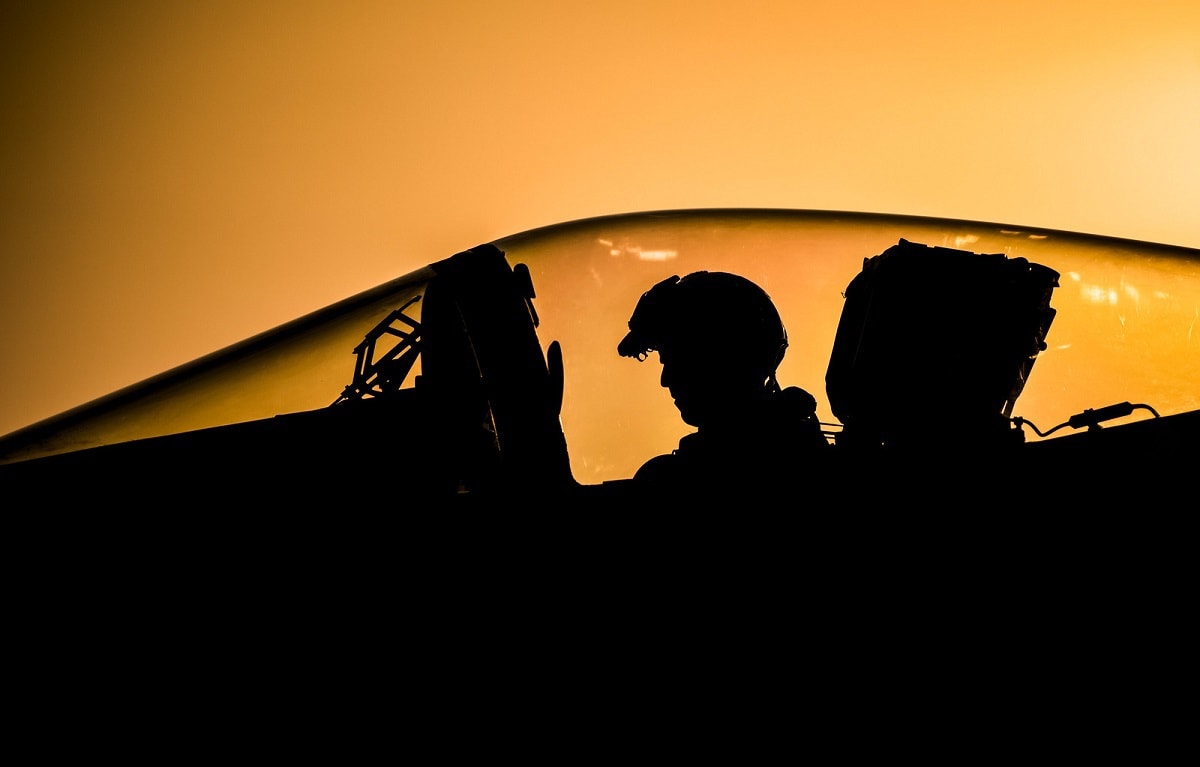Not long ago I wrote in these pixels that there is a “beautiful stability” to U.S. foreign policy. In general, that’s a good thing. Consensus popular and elite sentiments toward policy discourage Washington from swerving too wildly when a new presidential administration assumes office, and especially when the White House or Congress changes hands between political parties. U.S. foreign policy tacks back and forth like a sailboat steering the same general course—a course that commands enduring support from society and state.
Sometimes, though, stability is an unlovely force. Bad ideas, as well as good, can command overwhelming support. In such cases, stability cements policies or strategies founded on an errant consensus. Well-advised course changes never take place.
Exhibit A: the nuclear-powered aircraft carrier USS Dwight D. Eisenhower and its strike group left port this past week on what naval specialists term a “double-pump deployment.” The new deployment comes on the heels of a 270-day cruise just last year—a cruise that included 206 consecutive days at sea to dodge the pandemic. USS Theodore Roosevelt embarked on its own double-pump deployment in December after the COVID-19 debacle that stranded the flattop in Guam last spring. It appears Eisenhower is bound for the Middle East judging from the words of Chief of Naval Operations Mike Gilday. Admiral Gilday predicts that, under new leadership, Washington will continue the practice of keeping a carrier on station in the U.S. Central Command area of responsibility more or less perpetually.
Such deployments bespeak strategic indiscipline. At its most fundamental, military strategy is about setting and enforcing priorities. Self-discipline helps the country get its way on what matters most without overspending its finite stock of martial resources. That means dispensing with worthy but less critical commitments. Inability or unwillingness to set and enforce priorities counts among the gravest sins makers of policy and strategy can commit.
Over the past three presidencies, Democrat and Republican, a consensus has coalesced around the idea that competing with Communist China should rank atop the United States’ list of strategic priorities. Russia comes second, while lesser contenders such as North Korea and Iran trail behind. The Trump administration formalized this hierarchy in the 2018 National Defense Strategy, and thus far, the Biden administration has evinced little desire to revise it. This is good. It reflects how China’s rise to great power and penchant for domineering diplomacy have changed Asia and the world.
Unfortunately, the new consensus now coexists with an older—and incompatible—consensus stressing the vital importance of the Persian Gulf region. I suppose we have Saddam Hussein to thank, or blame, for the Middle East orthodoxy. Before August 1990, when Saddam’s Iraq invaded Kuwait, the U.S. Navy and the Pentagon regarded the region as a strategic backwater and kept a force befitting a backwater on station there. A handful of surface combatants anchored the U.S. naval presence in the region until heavy forces started arriving in the Gulf region to reverse aggression.

Sailor conducts pre-flight checks on an EA-18G Growler on the flight deck of USS Dwight D. Eisenhower.
And then stayed. Events seemed to ratify the region’s importance after Desert Storm in 1991, when open war gave way to years of using naval and ground-based air power to enforce UN sanctions on Iraq. Then came 9/11, which gave rise to the global war on terror, a counterterrorist campaign centered on the broader Middle East. Then came 2003, when a U.S.-led coalition invaded and occupied Iraq. The consensus congealed further. And Iran was there all the while, supplying another impetus for deep engagement. Over time the Islamic Republic morphed into the primary reason given for keeping heavy forces—including one or even two carriers—in the Gulf region at all times. The need for such a presence came to seem self-evident as the years passed.
That the United States fields eleven carriers comes as cold comfort. (Only ten are deployable until shipbuilders can get the new USS Gerald Ford’s gee-whiz technology functioning as designed.) How hard can it be to deploy one or two vessels out of ten? Well, only a fraction of the fleet is ready to deploy at any given moment. Take into account routine maintenance, major overhauls, training, and R&R time—the rhythm of a ship’s life—and well upwards of three nuclear-powered aircraft carriers must be in the inventory to keep one U.S.-based carrier deployed to the U.S. Fifth Fleet, the Central Command’s naval arm.
Do the arithmetic. Keeping even a single carrier in the Gulf region while trying to compete with China and Russia, ostensibly the United States’ chief foreign-policy threats, is bound to wear down the carrier fleet over time. It’s doubly ironic that it’s Eisenhower making a double-pump deployment, considering the engineering woes that befell the ship in the past owing to overuse. Nor are Ike’s troubles a one-off thing; maintenance problems also idled sister ship Harry S. Truman in recent years. Machinery ages prematurely with intensive use.
Chronological age matters just as mechanical age does. The first-in-class USS Nimitz—a vessel currently returning home after a wearisome ten-month deployment to the Fifth Fleet—is pushing fifty. Fifty is not the new thirty for gray hulls; it is a ship’s dotage. Deploy an aging fleet too promiscuously and engineering difficulties like those suffered by Eisenhower and Truman verge on inevitable. In turn, adequate numbers of flattops may not be available to deter or fight China or Russia if the fleet is worn out from guarding against Iran. Sustaining too rapid an operating tempo constitutes a serious—and foreseeable, and self-inflicted—impediment to battle readiness.
It’s time to downgrade the Persian Gulf region on the Pentagon’s list of strategic priorities—and let the new, healthier consensus on China and Russia prevail. Let’s align naval operations and force deployments with national strategy at long last—and husband resources for where they are needed most.
Carl von Clausewitz would have some tart words for Pentagon overseers. You might sum up the Prussian sage’s thoughts about when to siphon effort from top priorities thus: do not risk what matters most for the sake of what matters less. Clausewitz counsels against secondary undertakings unless they appear “exceptionally rewarding,” and unless they do not place more important priorities at risk. He measures risk in terms of resources. Only if the armed forces enjoy “decisive superiority” of resources in the primary theater should commanders countenance diverting resources to secondary endeavors. Otherwise they cannot afford a discretionary venture.
If commanders do not enjoy decisive superiority in the main theater and plunge ahead anyway, they run undue risk—and court disaster.
Reward, risk, resources: these are Clausewitz’s Three Rs for setting and enforcing priorities. Does countering Iran promise exceptional rewards for the U.S. Navy and the Pentagon, do the U.S. armed forces command decisive superiority over China and Russia, and can the armed forces keep up a Gulf aircraft-carrier presence without running grave risks in the strategic competition with those great-power rivals? Unless the answer to all three questions is a throaty yes, the Biden Pentagon should rethink the U.S. military posture in the Middle East.
Now looks like an auspicious time for some foreign-policy instability. Let’s veer onto a new—and strategically prudent—path.
James Holmes is J. C. Wylie Chair of Maritime Strategy at the Naval War College and coauthor of Red Star over the Pacific. The views voiced here are his alone.

